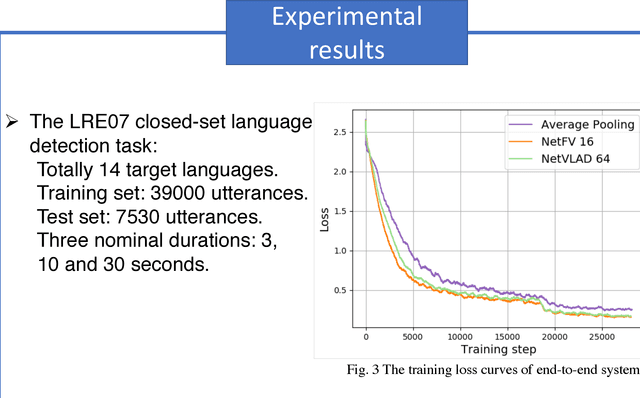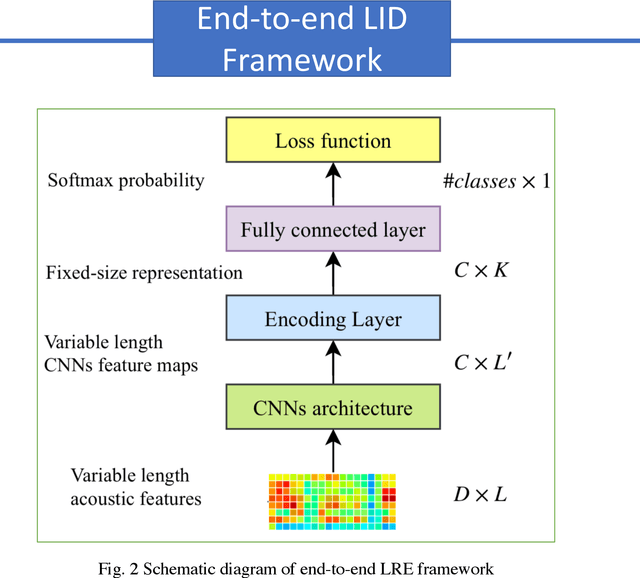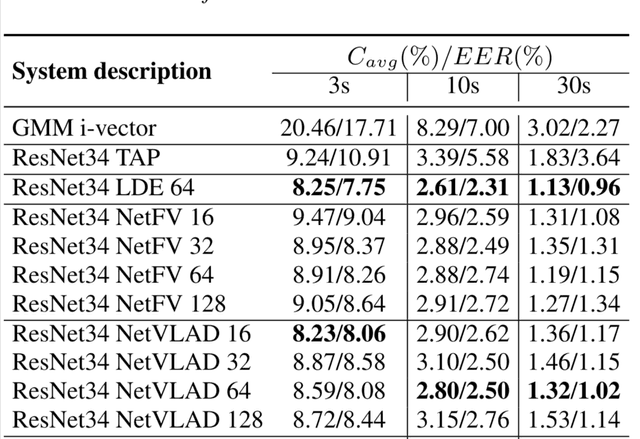Haibin Zhong
End-to-end Language Identification using NetFV and NetVLAD
Sep 09, 2018


Abstract:In this paper, we apply the NetFV and NetVLAD layers for the end-to-end language identification task. NetFV and NetVLAD layers are the differentiable implementations of the standard Fisher Vector and Vector of Locally Aggregated Descriptors (VLAD) methods, respectively. Both of them can encode a sequence of feature vectors into a fixed dimensional vector which is very important to process those variable-length utterances. We first present the relevances and differences between the classical i-vector and the aforementioned encoding schemes. Then, we construct a flexible end-to-end framework including a convolutional neural network (CNN) architecture and an encoding layer (NetFV or NetVLAD) for the language identification task. Experimental results on the NIST LRE 2007 close-set task show that the proposed system achieves significant EER reductions against the conventional i-vector baseline and the CNN temporal average pooling system, respectively.
 Add to Chrome
Add to Chrome Add to Firefox
Add to Firefox Add to Edge
Add to Edge